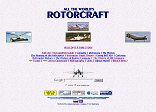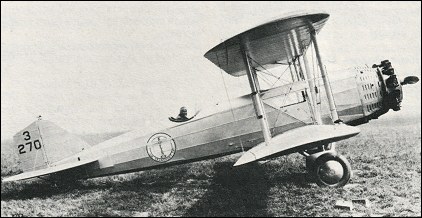|
| To meet the requirements of the Air Mail Department of the US Post Office, which needed a new mailplane to replace its ageing DH-4s, Boeing designed in 1925 a large biplane transport under the designation Boeing Model 40. It was required to compete against the submissions of other manufacturers, and the Post Office specification had stipulated the use of a Liberty engine, plus an ability to carry 454kg of air mail. A fairly conventional biplane of that period, with tailskid landing gear and a Liberty engine, the Model 40 had a mail . compartment in the forward fuselage, with the pilot seated well aft in an open cockpit. First flown on 7 July 1925, the Model 40 was unsuccessful in the competition, the Douglas entry being declared winner. This was to result in Boeing's design gathering factory dust for some 18 months until, in early 1927, the US Post Office began the process of turning the government air mail service over to private enterprise.
Requiring an aircraft to operate on any of the routes for which it might bid, Boeing dusted off the Model 40, and began a process of redesign and conversion to make it suitable for the sort of operation the company had in mind. The resulting Model 40A had three major changes by comparison with the original Model 40 prototype: the Liberty engine was replaced by a Pratt & Whitney Wasp radial; its composite structure fuselage gave place to one of steel tube with fabric covering; and better use was made of fuselage capacity. The pilot's position remained unchanged, but an enclosed cabin for two passengers was provided more or less directly over the lower wing, with cargo/mail compartments between the pilot's cockpit and
the cabin, and between the cabin and the engine firewall.
Boeing was successful in its bid, being allocated the San Francisco-Chicago route, and was equally successful in gaining approval for its new aircraft. Following tests .for certification, the Model 40A gained Approved Type Certificate No. 2, issued by the US Department of Commerce. A total of 25 was built, 24 for service with the new Boeing Air Transport Corporation, and one as an engine test-bed for Pratt & Whitney. The first example of the Model 40A was flown initially on 20 May 1927, and all 24 for Boeing Air Transport had been delivered in time for inauguration of the company's first air mail service on 1 July 1927.
| MODEL | Boeing Model 40A |
| ENGINE | 1 x 313kW Pratt & Whitney Wasp radial piston engine |
| WEIGHTS |
| Take-off weight | 2722 kg | 6001 lb |
| Empty weight | 1602 kg | 3532 lb |
| DIMENSIONS |
| Wingspan | 13.47 m | 44 ft 2 in |
| Length | 10.12 m | 33 ft 2 in |
| Height | 3.73 m | 12 ft 3 in |
| Wing area | 50.82 m2 | 547.02 sq ft |
| PERFORMANCE |
| Max. speed | 206 km/h | 128 mph |
| Cruise speed | 169 km/h | 105 mph |
| Ceiling | 4420 m | 14500 ft |
| Range | 1046 km | 650 miles |
| Michael Hartnett, e-mail, 05.02.2024 18:24 As dreadful as it may seem, I can confidently tell you that it is 100% possible for a h a c k e r to fix your credit. The joy I feel cannot be quantified. It feels like I have no worries in the world anymore since I hired H A C K M A V E N S CREDIT SPECIALIST. They permanently fixed my credit from 412 to 785 excellent score and wiped my bankruptcy, repossessions, and debt over $43,560 within 5-days. I read about them here and decided to give them a try via EMAIL: H A C K M A V E N S 5 @ G M A I L. C O M or Call /Text /WhatsApp: [+ 1 (2 0 9) 4 1 7 â€" 1 9 5 7], they've provided a wide range of services to those with poor /bad credit. How best can I show my gratitude than to do a 5-star review for what H A C K M A V E N S has done? Hit them up today and get yours done. reply | | Frank Donovan, e-mail, 24.01.2024 06:18 I am so happy to have consulted RAPID RESCORE CREDIT for my credit repairs. I discovered that I had 5 negative items on my credit most especially IRS, delayed payments and loans and over 7 hard inquiries from every bureaus and it hindered me from moving forward in my business. I could not access any loan so I started looking for ways to salvage my condition, I then discovered this specialist (RAPID RESCORE CREDIT) on reddit though there were other ones there but my instinct directed me towards Mr Jackson. I was asked for funds to get started with the job and I gave them the benefit of doubt and made some commitments. My fico score was moved from 609 to an excellent score (799) and all the negatives were deleted from my report. Right now I have a clean profile with wonderful trade lines. I’m recommending their services to anyone in dire need of credit fix, you can reach them via JACKSONRAPIDCREDITSCORE@GMAIL.COM reply | | Patrick Burnside, e-mail, 13.01.2024 01:06 Here's how I raised my FICO score from 430 to 785. My diabetic condition caused me to fall behind on my medical bills, which caused my world to fall apart. I searched high and low for someone who could help me repair my credit, but to no avail. In November of last year, I met JERRYLINK CREDIT GROUP through a friend they had worked for; they restored my dignity and boosted my credit in 9 days, allowing me to take out a loan and pay for a house. You can reach them at JERRYLINKGROUP@GMAIL.COM or via TEXT at +1 626 514 0620 reply | | Morgan Kennedy, e-mail, 10.12.2023 08:15 Mr. Jerry and I have worked together for many years now in a professional setting. I am a realtor and have clients in various stages of credit repair. Mr. Jerry is ALWAYS the person I recommend to my clients. His services are second to none & he has always done the best job in order to get my clients in a home as quick as possible when credit is holding them back. He has helped my family members, friends, & strangers I have met through my services. Thank you Mr. Jerry for caring about people like you do! You are making a difference!!! Reach out to Jerrylink Credit Group via: jerrylinkgroup@gmail.com or text 6265140620. Thank me later. reply | |
| | Grace Peterson, e-mail, 02.12.2023 03:54 I strongly JERRYLINK CREDIT GROUP: I think they are the best in terms of credit repair. I had worked with different credit companies in the past, but there was no significant change on my credit report. So many credit forums recommended DYI, I tried every credit hack in the book all o no avail. A real estate agent introduced me to Mr. Jerry, who has been helping his clients. Mr. Jerry and his team helped me erase all the negative things on my report, and raised my score to excellent score across all three bureaus. I’m recommending as promised. They are available on gmail: JERRYLINKGROUP AT GMAIL DOT COM or +16265140620 reply | | Leon Cody Garcia, e-mail, 28.11.2023 23:00 We will fix your credit; remove all negative items, clear loans, collections and hard inquiries and also raise your score to 760+ ASAP. These were the exact words from M. Jerry when I contacted him via JERRYLINKGROUP at GMAIL dot COM. I decided to give JERRYLINK CREDIT GROUP a try and to my greatest surprise it worked out for me. In less than 11days after all documentation; my score drastically increased to 810 across the three national credit bureaus (Equifax, Experian and TransUnion), I could no longer sight evidence of collections, negative marks, mortgage loan, collections and hard inquiries on my credit report. I honestly appreciate Mr. Jerry for fixing my credit. reply | | Joe Buko, e-mail, 27.07.2014 07:56 July 2014- I am just beginning to build a flying model of the Boeing 40C with a wingspan of 89".It'll have a 1.20cu in. Saito glow engine. It's modeled after Addison Pemberton's 40C. reply | | John Cummings, e-mail, 02.03.2011 06:44 There was a beatiful 40 at the Cottage Grove, Oregon fly in August 2009. I believe the pilot was the owner, and there is a fantastic web site. He took some VIP's for a ride. The skies over Cottage Grove was filled with the sound of that radial with long exaust pipes. Classy Classic Airplane. reply | | ron schmidt, e-mail, 12.01.2009 22:50 do you know where i could find a set of construction drawings for the 40c plane to make a model? reply | | stephen winkler, e-mail, 27.03.2007 00:53 There was a Boeing Model 40B with the new Pratt and Whitney Hornet engines at 525 horsepower. However, that was the most horsepower that could be expected from a single row of nine cylinders and increasing the number of cylinders did not always result in the increase of horsepower. For example, the Siddeley Jaguars were two rows of seven cylinders or fourteen cylinders and their horsepower was 385. So Boeing decided to increase the number of engines and this led to the Boeing 80 with three Hornets instead of one. reply |
|
Do you have any comments?
|
| 
COMPANY
PROFILE
All the World's Rotorcraft
|






